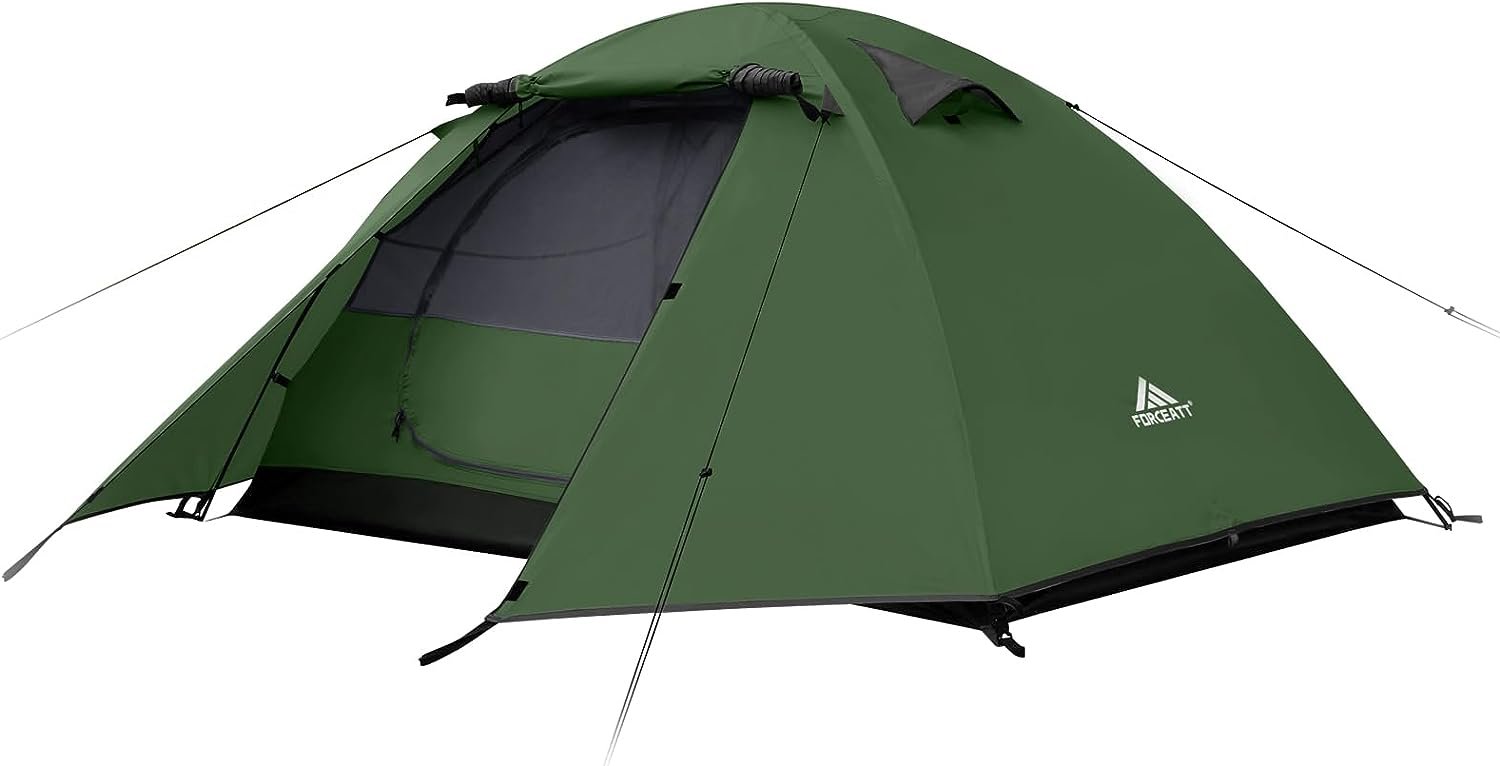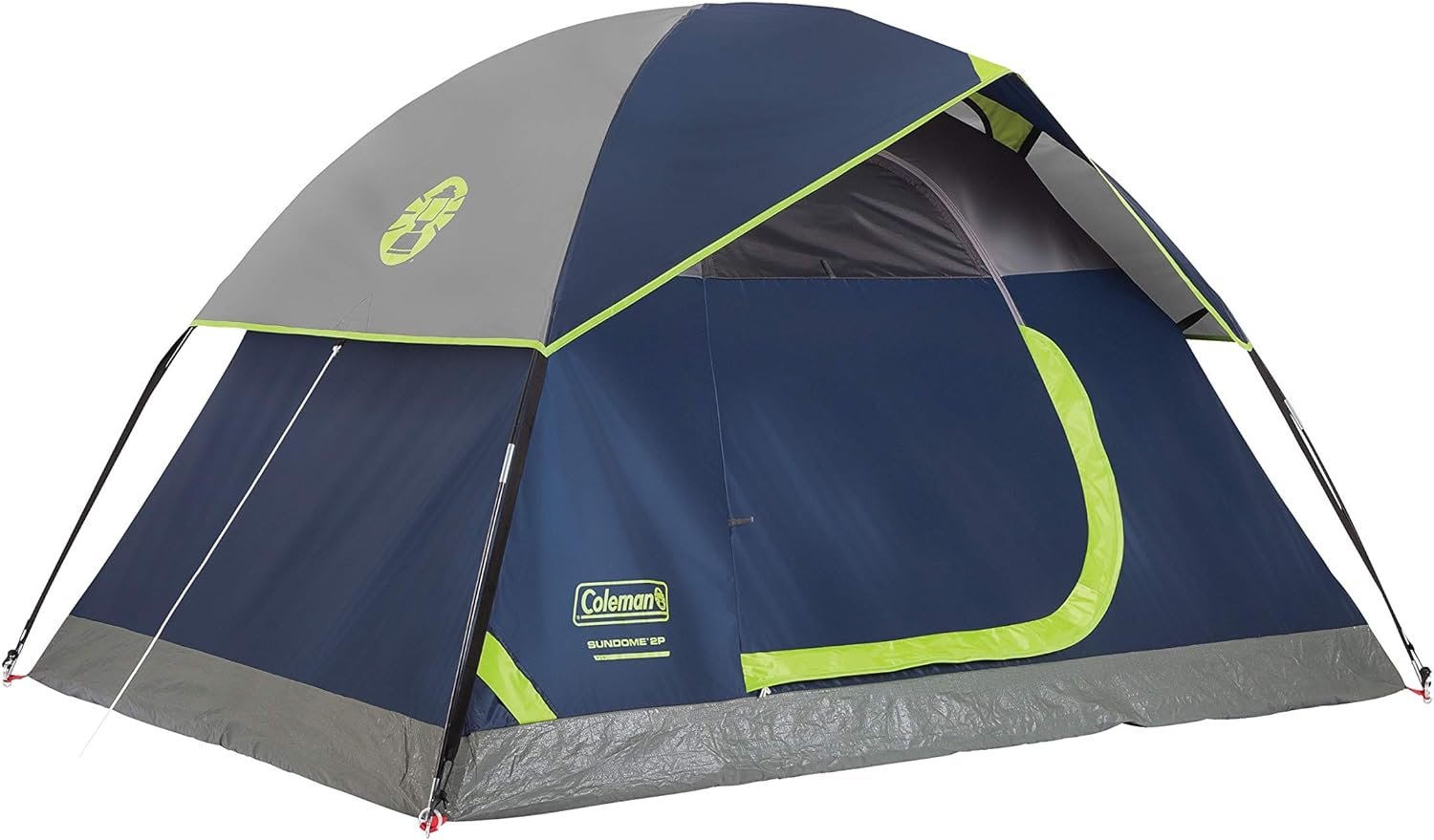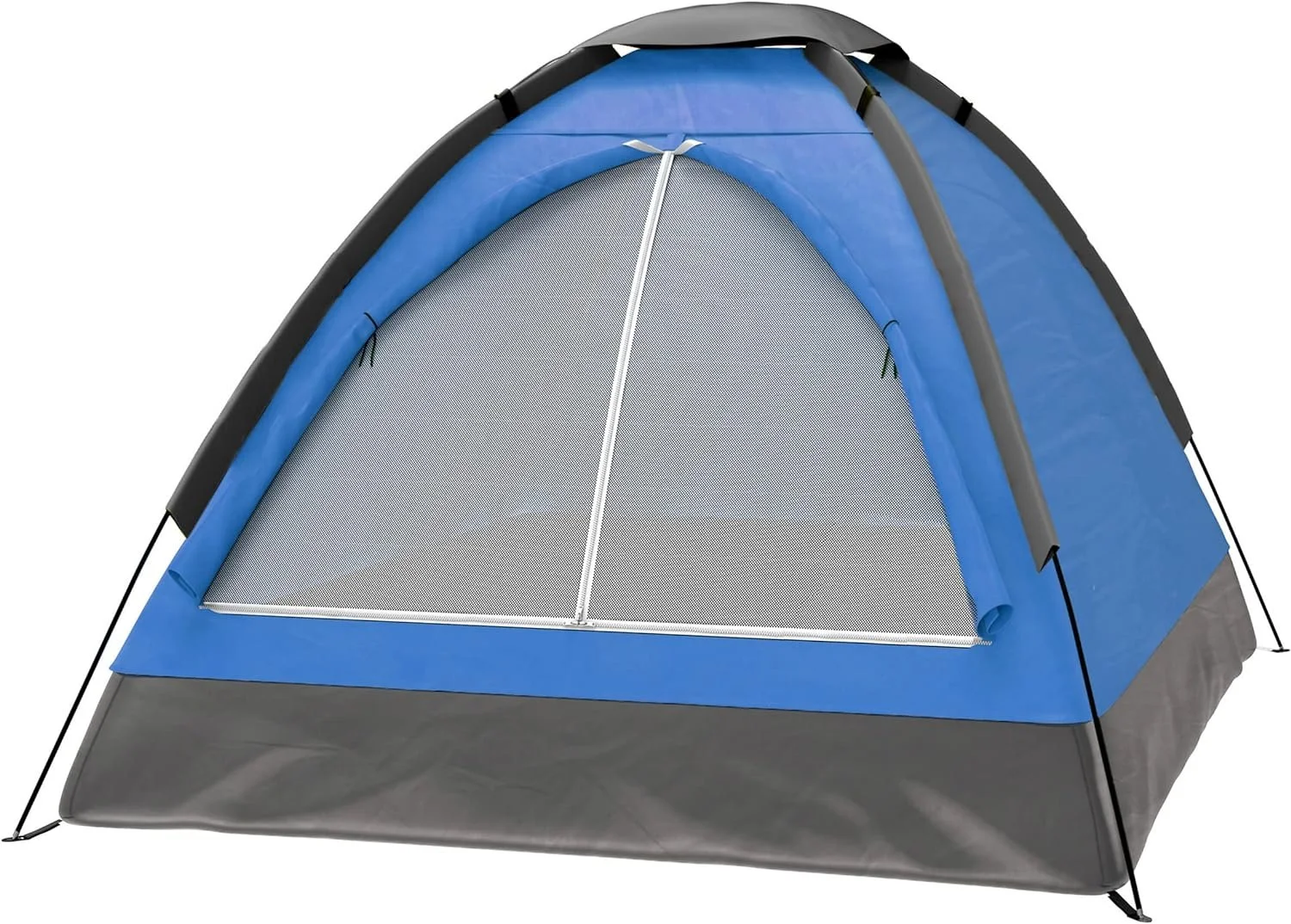Hammock Camping vs. Tent Camping
Camping is a beloved outdoor activity that allows individuals to connect with nature and escape the hustle and bustle of everyday life. One of the most important decisions campers face is choosing between a hammock and a lightweight tent. Both options have their own unique advantages and disadvantages, making it a difficult choice for many outdoor enthusiasts. In this article, we will compare hammocks and lightweight tents in terms of comfort, protection, versatility, set-up, weight, space, durability, cost, safety, environmental impact, maintenance, and personal preference.
Key Takeaways
Hammocks are more comfortable for sleeping, but lightweight tents provide more protection from the elements.
Both hammocks and lightweight tents can be used in different camping scenarios, but tents are more versatile in extreme weather conditions.
Lightweight tents provide more space for camping gear, but hammocks are lighter to carry.
Lightweight tents are more durable and safer to use, but hammocks are more environmentally friendly and require less maintenance.
Personal preference plays a big role in choosing between a hammock and a lightweight tent for camping.
Comfort: Is a Hammock or a Lightweight Tent More
Comfortable for Camping?
When it comes to comfort, opinions are divided between hammocks and lightweight tents. Hammocks provide a unique sleeping experience as they allow campers to gently sway in the breeze and feel closer to nature. The gentle rocking motion can be incredibly soothing and promote a restful night's sleep. However, some individuals find it challenging to find a comfortable position in a hammock and may experience back or neck discomfort.
On the other hand, lightweight tents offer a more traditional sleeping experience with a flat surface and ample room to stretch out. They provide a sense of security and privacy that hammocks may lack. However, the ground can be uneven or rocky, leading to discomfort during sleep. Ultimately, the choice between a hammock and a lightweight tent depends on personal preference and individual comfort needs.
Protection: Which Provides Better Protection from the
Elements, a Hammock or a Lightweight Tent?
Protection from the elements is crucial when camping, especially during inclement weather conditions. Hammocks often come with rainfly attachments that provide adequate protection from rain and wind. Additionally, they keep campers off the ground, reducing the risk of flooding or water seepage. However, hammocks may leave campers more exposed to bugs and insects, requiring additional measures such as bug nets or repellents.
Lightweight tents, on the other hand, offer a more comprehensive protection system. They provide a barrier against rain, wind, and bugs, ensuring a comfortable and dry camping experience. Tents also offer more privacy and security, making them an ideal choice for campers who value these aspects. However, setting up a tent in windy conditions can be challenging and may require additional stakes or guy lines for stability.
Versatility: Can a Hammock or a Lightweight Tent Be Used
in Different Camping Scenarios?
The versatility of camping gear is essential for outdoor enthusiasts who engage in various camping scenarios. Hammocks are highly versatile and can be used in different camping situations such as backpacking, car camping, and beach camping. They are lightweight and easy to pack, making them ideal for backpackers who need to minimize their load. Hammocks can also be set up in unconventional locations such as between trees or on rocky terrain.
On the other hand, lightweight tents are also versatile and can adapt to different camping scenarios. They provide a sense of security and privacy that hammocks may lack, making them suitable for family camping or longer trips. Tents can be set up on various terrains and offer more space for camping gear storage. However, they tend to be bulkier and heavier than hammocks, making them less suitable for backpacking or minimalist camping.
Set-Up: Which is Easier to Set-Up, a Hammock or a
Lightweight Tent?
The ease of setting up camping gear is an important factor to consider, especially for those who prefer a hassle-free experience. Hammocks are generally easier to set up compared to lightweight tents. With the right suspension system and straps, campers can quickly hang their hammocks between two trees or sturdy anchor points. This simplicity makes hammocks an attractive option for beginners or those who value convenience.
On the other hand, setting up a lightweight tent requires more time and effort. Campers need to assemble the poles, attach the rainfly, and stake down the tent for stability. While experienced campers may find this process straightforward, it can be daunting for beginners or those who prefer a quick and easy setup. However, once the tent is set up, it provides a comfortable and secure shelter.
Weight: Which is Lighter to Carry, a Hammock or a
Lightweight Tent?
Weight is a crucial consideration for backpackers or individuals who prioritize a lightweight camping experience. Hammocks are known for their lightweight design, making them an excellent choice for those who need to carry their gear over long distances. They are compact and can be easily packed into a backpack without adding significant weight. This advantage allows backpackers to explore remote areas without feeling weighed down.
On the other hand, lightweight tents have made significant advancements in recent years, with manufacturers focusing on reducing weight without compromising durability. While they may still be heavier than hammocks, lightweight tents offer more space and comfort. For car campers or individuals who prioritize comfort over weight, the slightly heavier load may be worth it.
Space: Which Provides More Space for Camping Gear, a
Hammock or a Lightweight Tent?
The amount of space available for camping gear is an important consideration for campers who need to store their belongings safely. Hammocks are minimalistic in design and do not provide much space for gear storage. However, some hammocks come with additional pockets or gear slings that allow campers to keep essential items within reach. Backpackers often rely on separate storage solutions such as dry bags or backpack compartments.
Lightweight tents offer more space for camping gear storage compared to hammocks. They typically come with vestibules or additional storage pockets where campers can keep their belongings organized and protected from the elements. This extra space is particularly useful for longer trips or family camping, where more gear and equipment are required.
Durability: Which is More Durable, a Hammock or a
Lightweight Tent?
Durability is a crucial factor to consider when investing in camping gear, as it directly affects the lifespan and performance of the equipment. Hammocks are generally made from durable materials such as nylon or polyester, which can withstand regular use and exposure to the elements. However, they are susceptible to tears or punctures if not properly cared for or set up in rough terrain.
Lightweight tents have also improved in terms of durability, with manufacturers using high-quality materials and reinforced stitching. They are designed to withstand various weather conditions and provide long-lasting performance. However, tents can be prone to wear and tear over time, especially if not properly maintained or stored.
Cost: Which is More Cost-Effective, a Hammock or a
Lightweight Tent?
Cost is an important consideration for many campers, as it determines the affordability and value of the camping gear. Hammocks are generally more affordable compared to lightweight tents. They come in a range of prices depending on the brand, material quality, and additional features. Basic hammocks can be purchased at a relatively low cost, making them an attractive option for budget-conscious campers.
On the other hand, lightweight tents tend to be more expensive due to their complex design and additional features such as rainfly attachments or vestibules. Higher-end tents made from premium materials can be quite costly. However, it is important to consider the long-term investment and durability of the equipment when comparing prices.
Safety: Which is Safer to Use, a Hammock or a Lightweight
Tent?
Safety is paramount when camping, as it ensures the well-being and security of campers during their outdoor adventures. Hammocks are generally safe to use when properly set up and secured between sturdy anchor points. However, campers need to be cautious of potential hazards such as falling branches or unstable trees. It is essential to choose suitable anchor points and inspect the surroundings for any potential risks.
Lightweight tents provide a higher level of safety and security compared to hammocks. They offer a physical barrier between campers and the outside environment, protecting them from potential dangers such as wildlife or extreme weather conditions. Tents also provide a sense of privacy and security, which can contribute to a more comfortable camping experience.
Environmental Impact: Which is More Environmentally
Friendly, a Hammock or a Lightweight Tent?
The environmental impact of camping gear is an important consideration for outdoor enthusiasts who value sustainability and eco-friendly practices. Hammocks are generally considered more environmentally friendly compared to lightweight tents. They have a smaller footprint and do not require clearing or altering the natural landscape for setup. However, it is crucial to use tree-friendly straps and avoid damaging trees or vegetation.
Lightweight tents, while providing more comprehensive protection and comfort, have a larger environmental impact. They require clearing of the ground surface for setup and may leave a more noticeable footprint in natural areas. However, advancements in eco-friendly materials and practices have made it possible to minimize the environmental impact of lightweight tents.
Maintenance: Which Requires Less Maintenance, a
Hammock or a Lightweight Tent?
Maintenance is an essential aspect of owning camping gear, as it ensures the longevity and performance of the equipment. Hammocks generally require less maintenance compared to lightweight tents. They are easy to clean and dry quickly, making them ideal for campers who prefer low-maintenance gear. However, it is important to inspect hammocks regularly for any signs of wear or damage.
Lightweight tents require more maintenance compared to hammocks. They need to be properly cleaned, dried, and stored after each use to prevent mold or mildew growth. Tents may also require occasional seam sealing or waterproofing treatments to maintain their performance over time. Regular inspections are necessary to identify any tears or damage that may compromise the tent's integrity.
Personal Preference: Which is Better for You, a Hammock
or a Lightweight Tent?
Personal preference plays a significant role in choosing between a hammock and a lightweight tent. Each individual has unique comfort needs, camping preferences, and priorities. Some campers may prioritize the freedom and closeness to nature that hammocks provide, while others may value the comfort and security of lightweight tents. It is important to consider personal preferences, camping style, and specific needs when making a decision.
In conclusion, the debate between hammocks and lightweight tents for camping is a complex one. Both options offer their own set of advantages and disadvantages, making it challenging to determine the ultimate camping companion. Campers must carefully consider factors such as comfort, protection, versatility, set-up ease, weight, space, durability, cost, safety, environmental impact, maintenance, and personal preference.
Ultimately, the best choice is the one that makes campers feel comfortable, safe, and happy while enjoying the great outdoors. Whether it's the gentle sway of a hammock or the secure shelter of a lightweight tent, campers should weigh their options and choose the option that best suits their needs and preferences. Remember to prioritize personal comfort and enjoyment when embarking on your next camping adventure.




